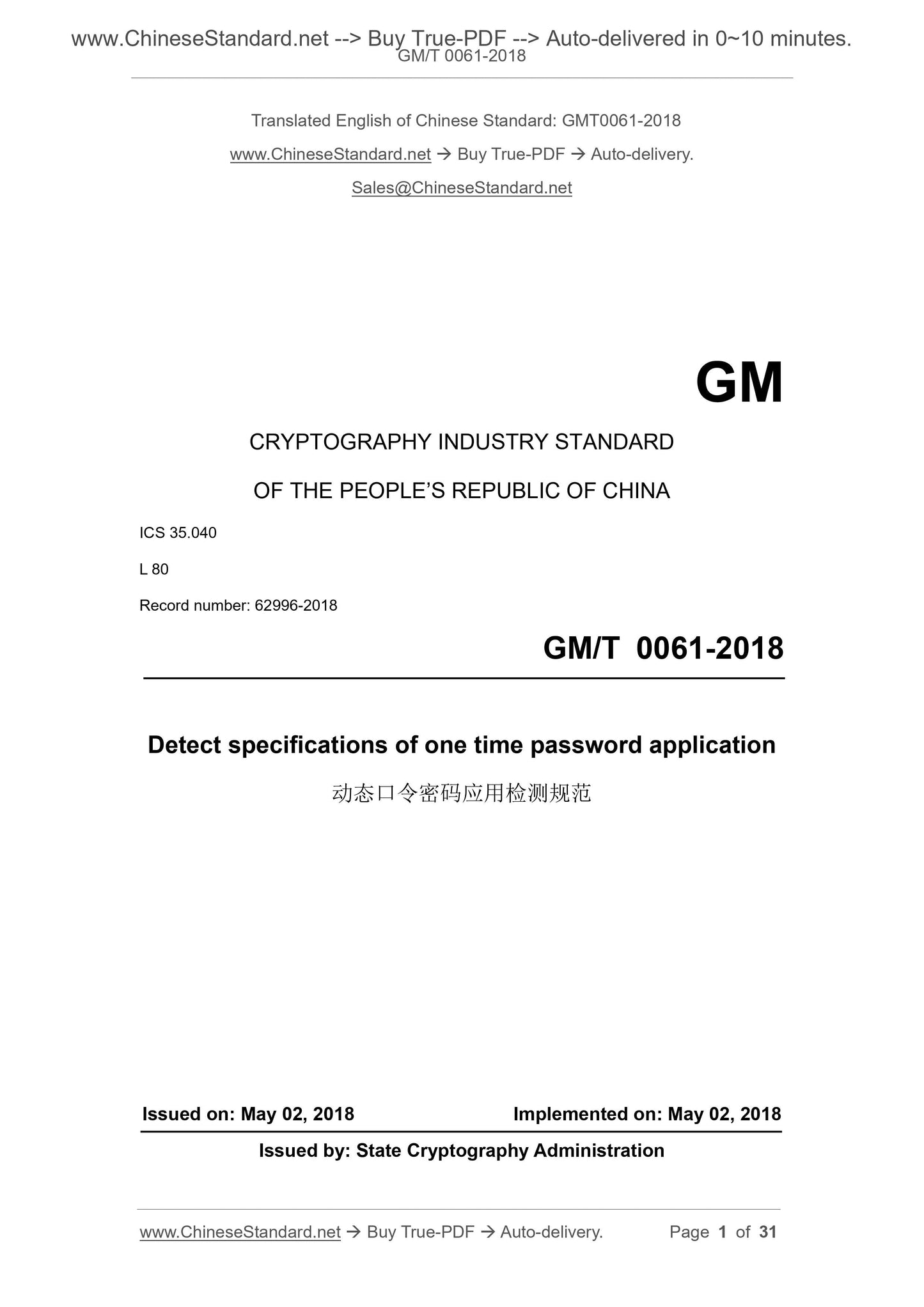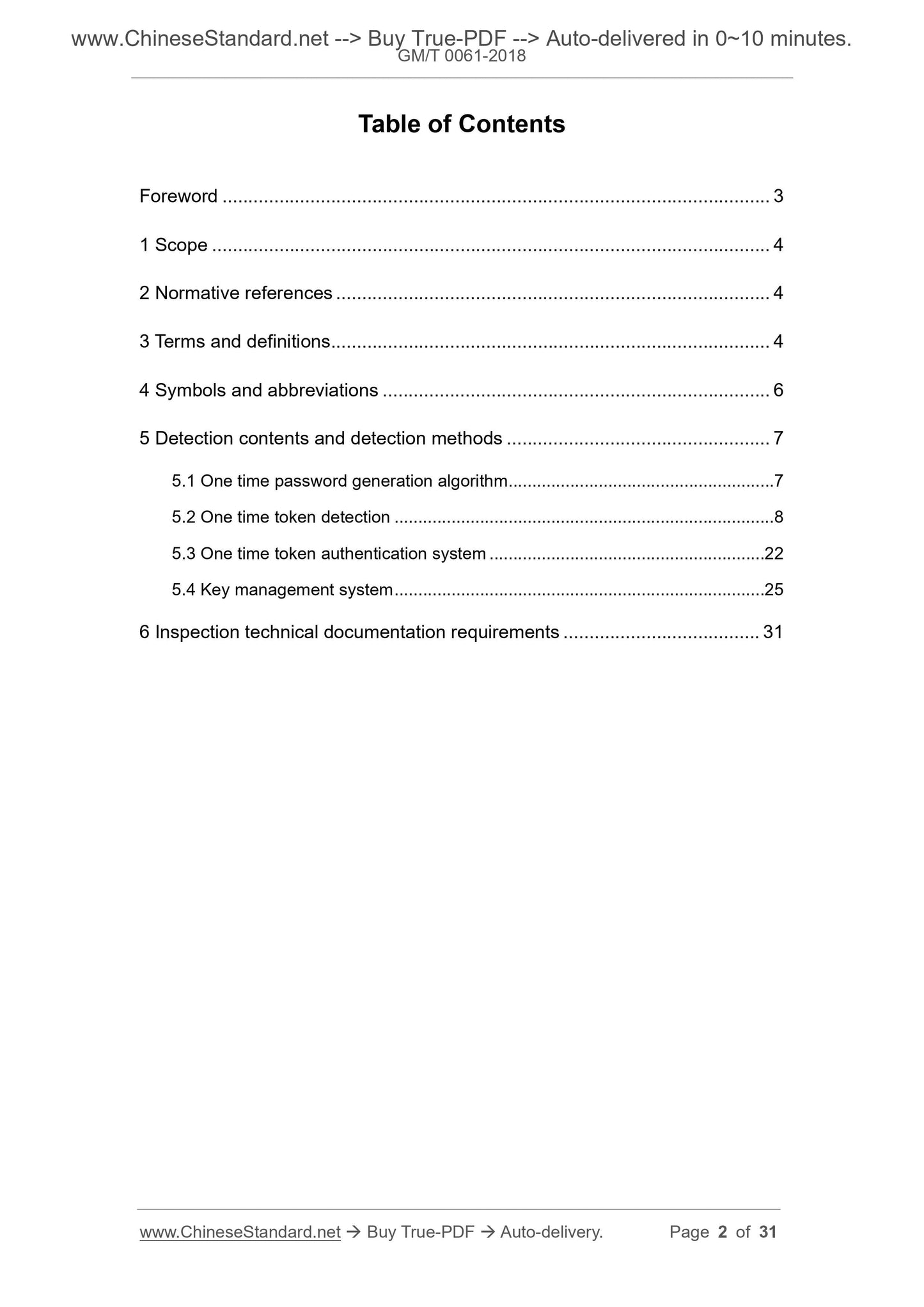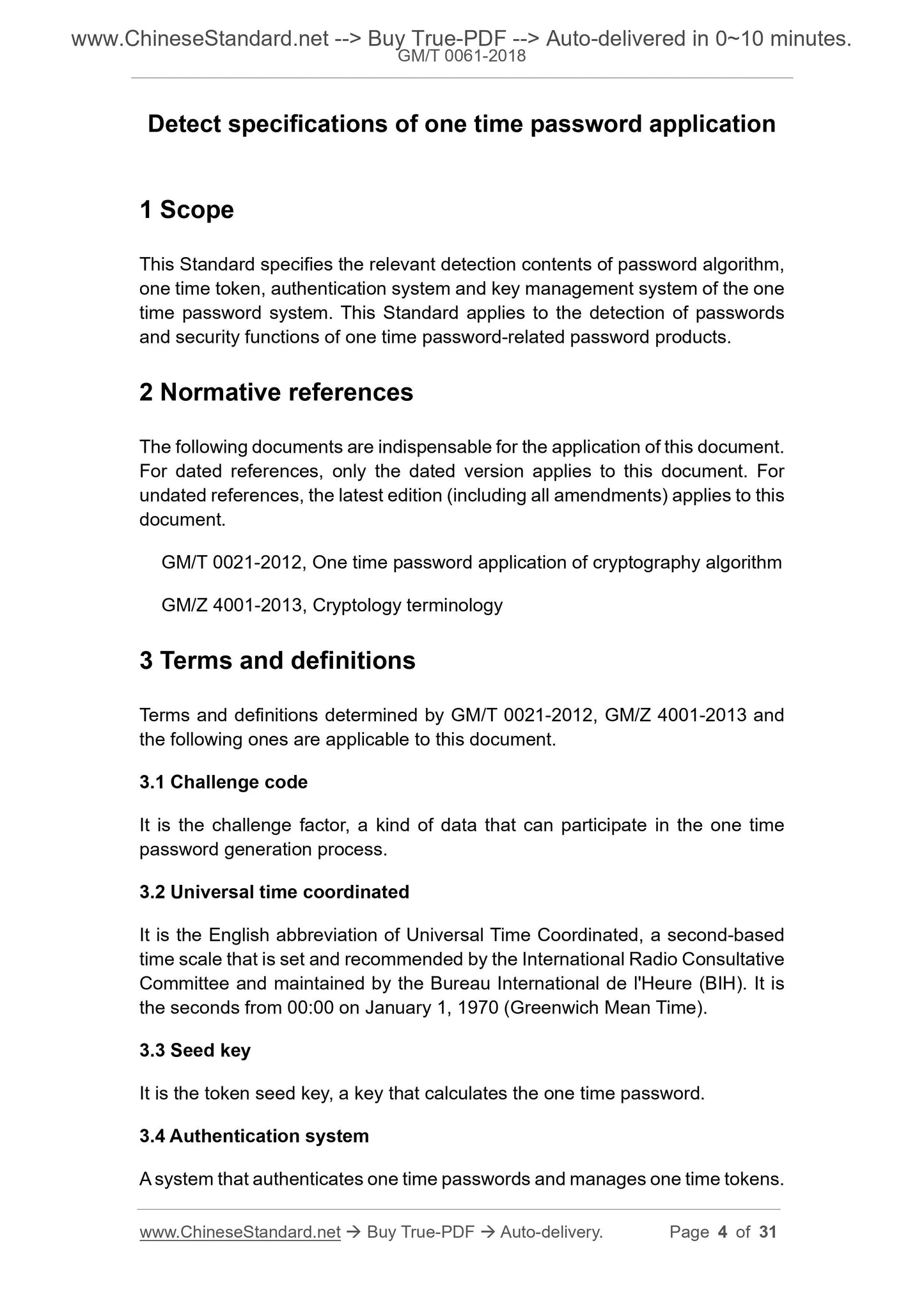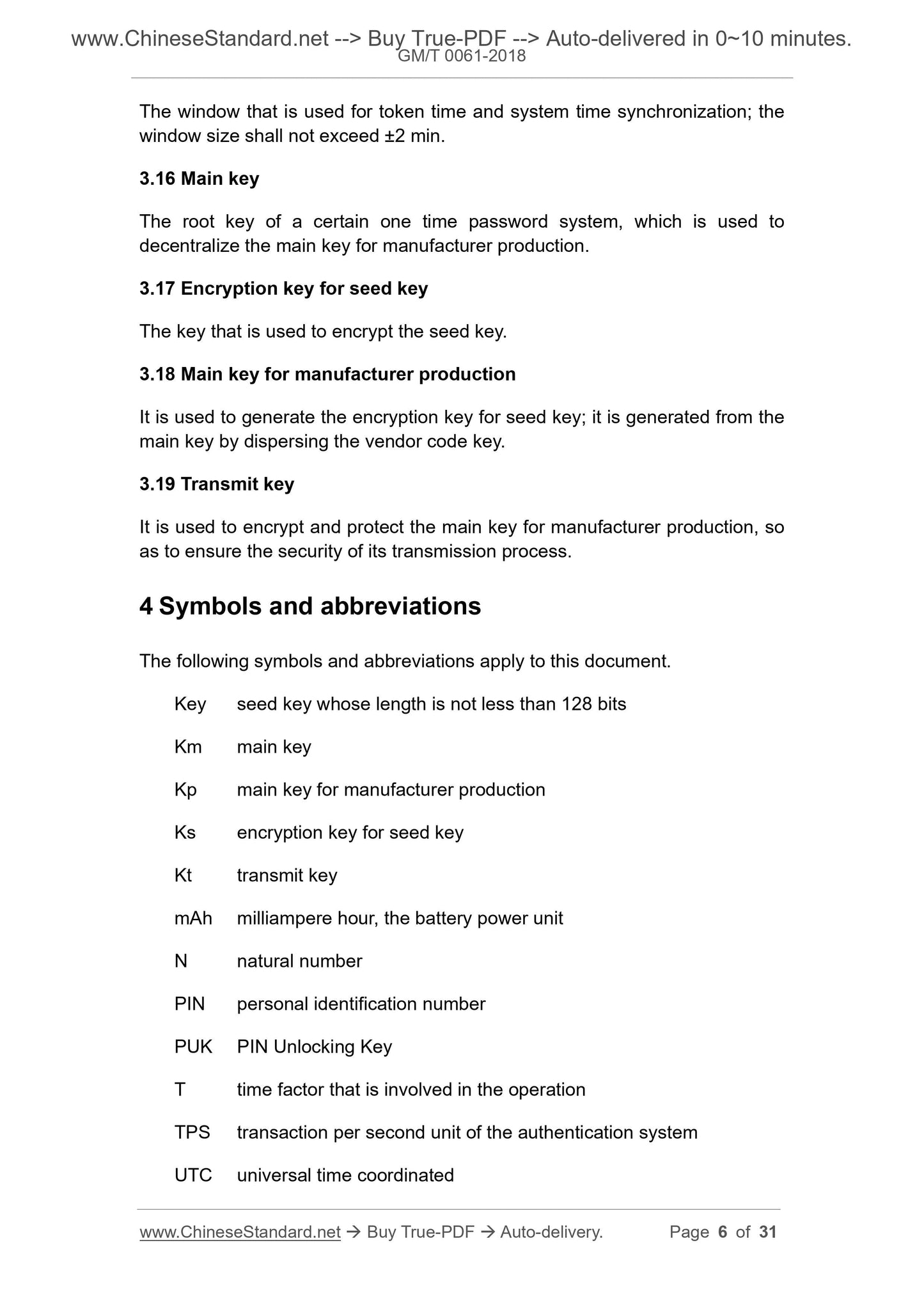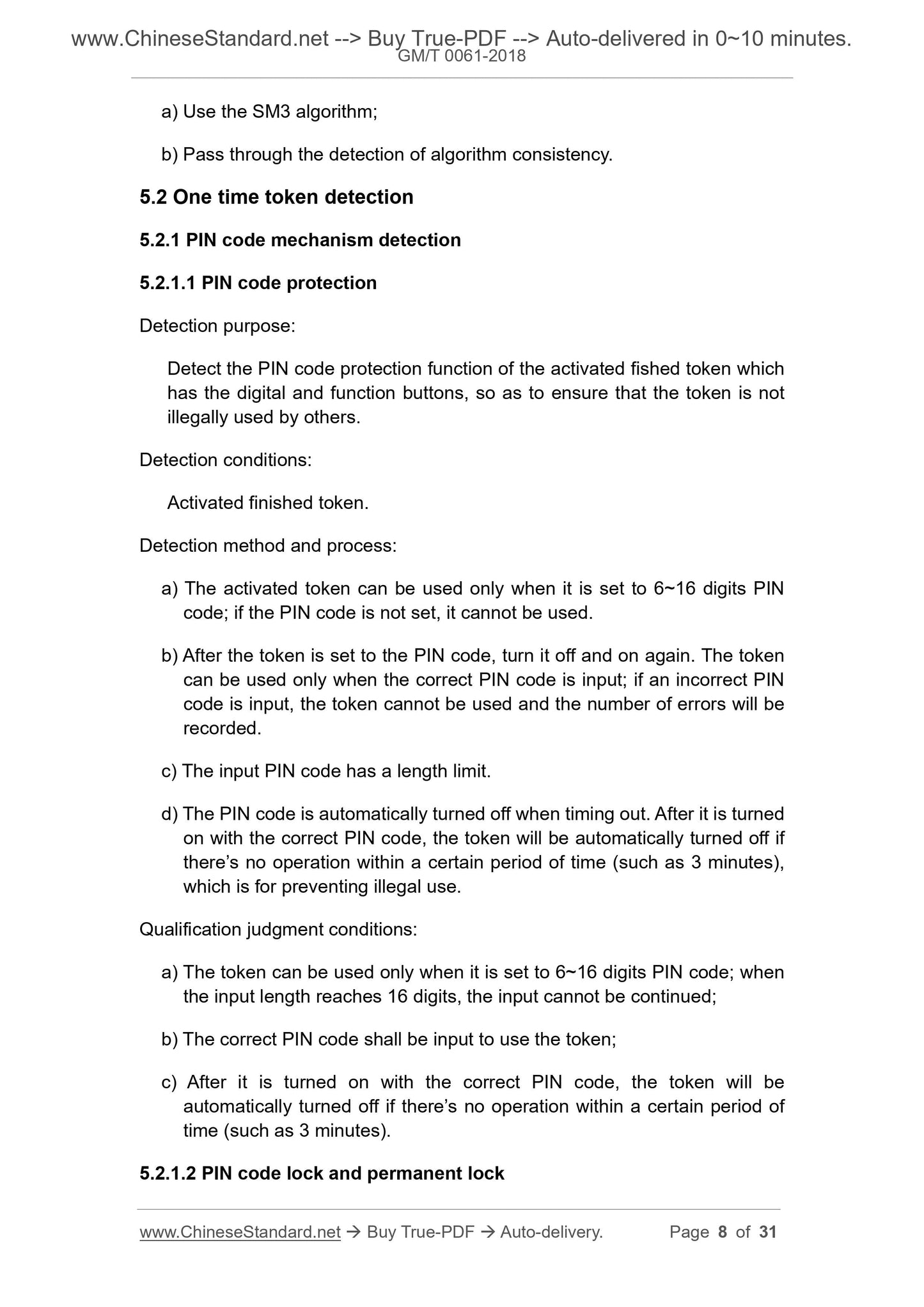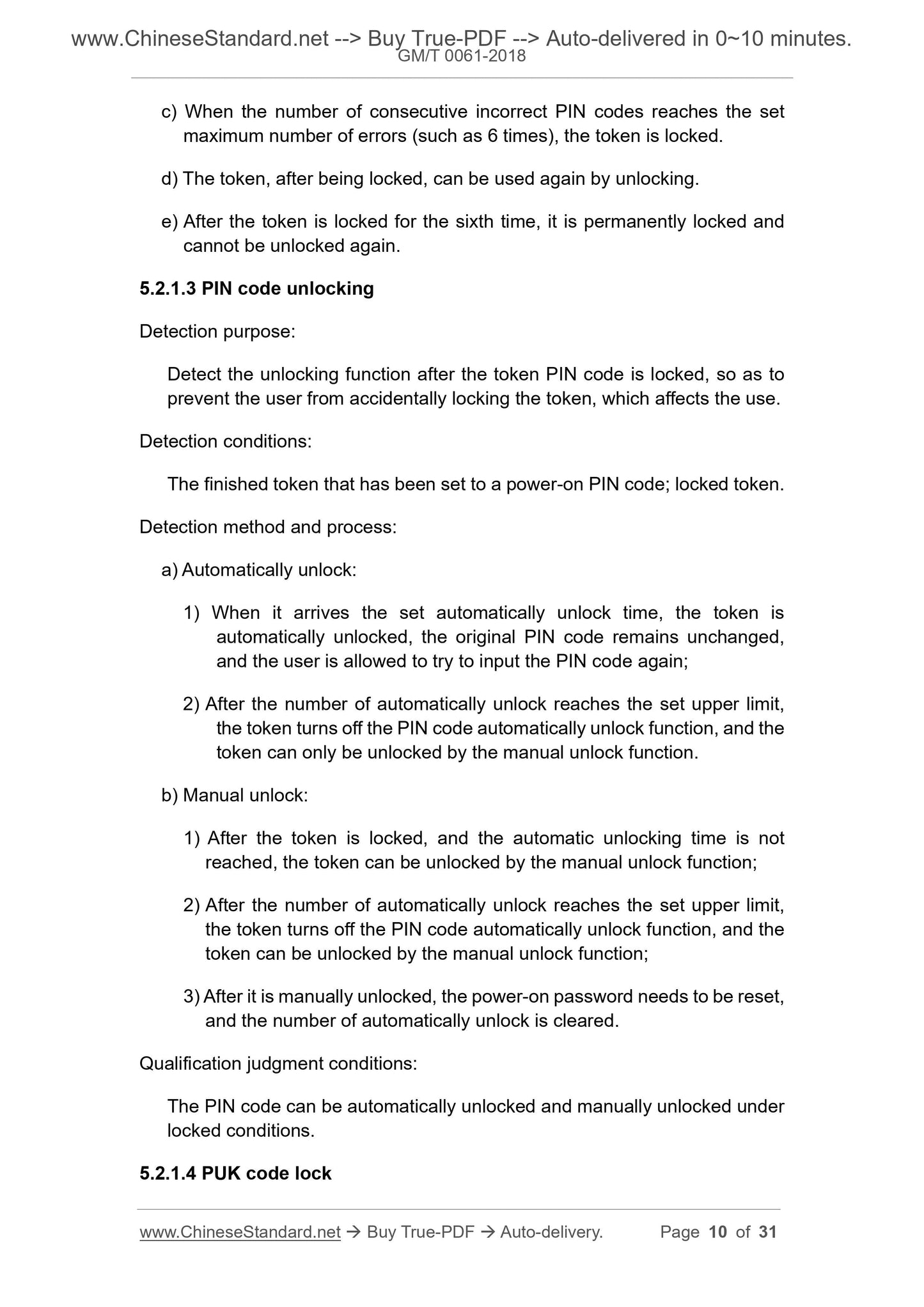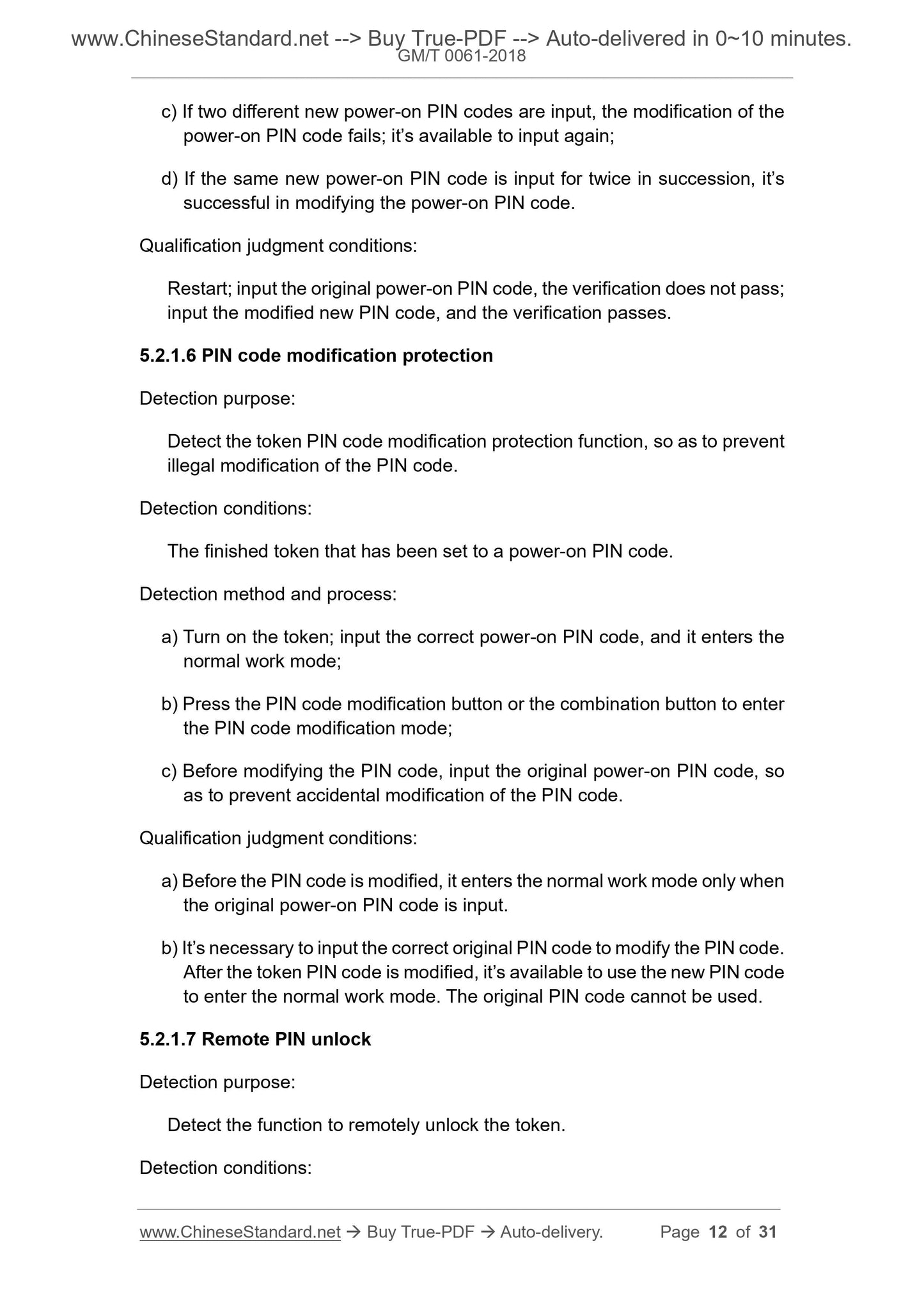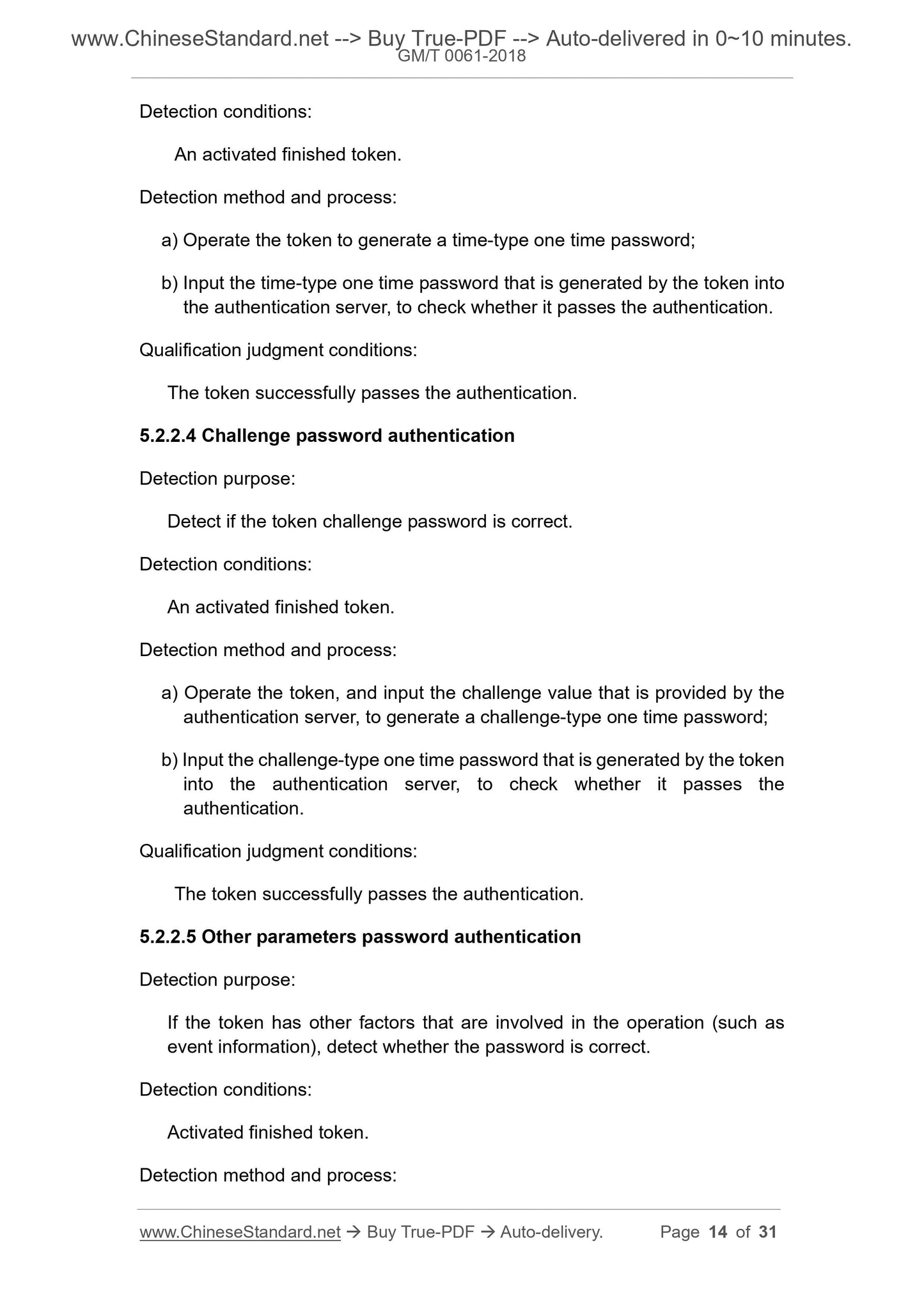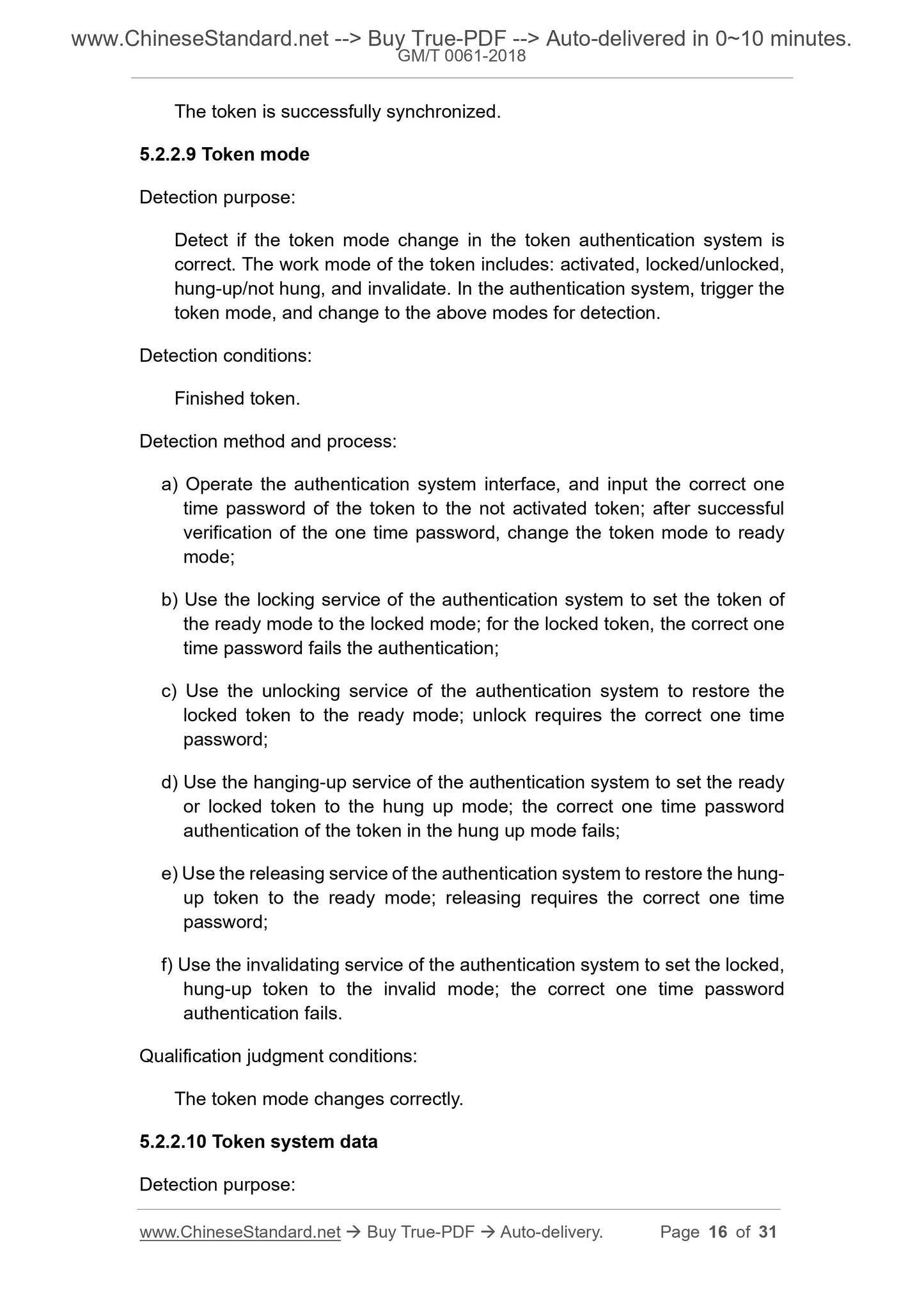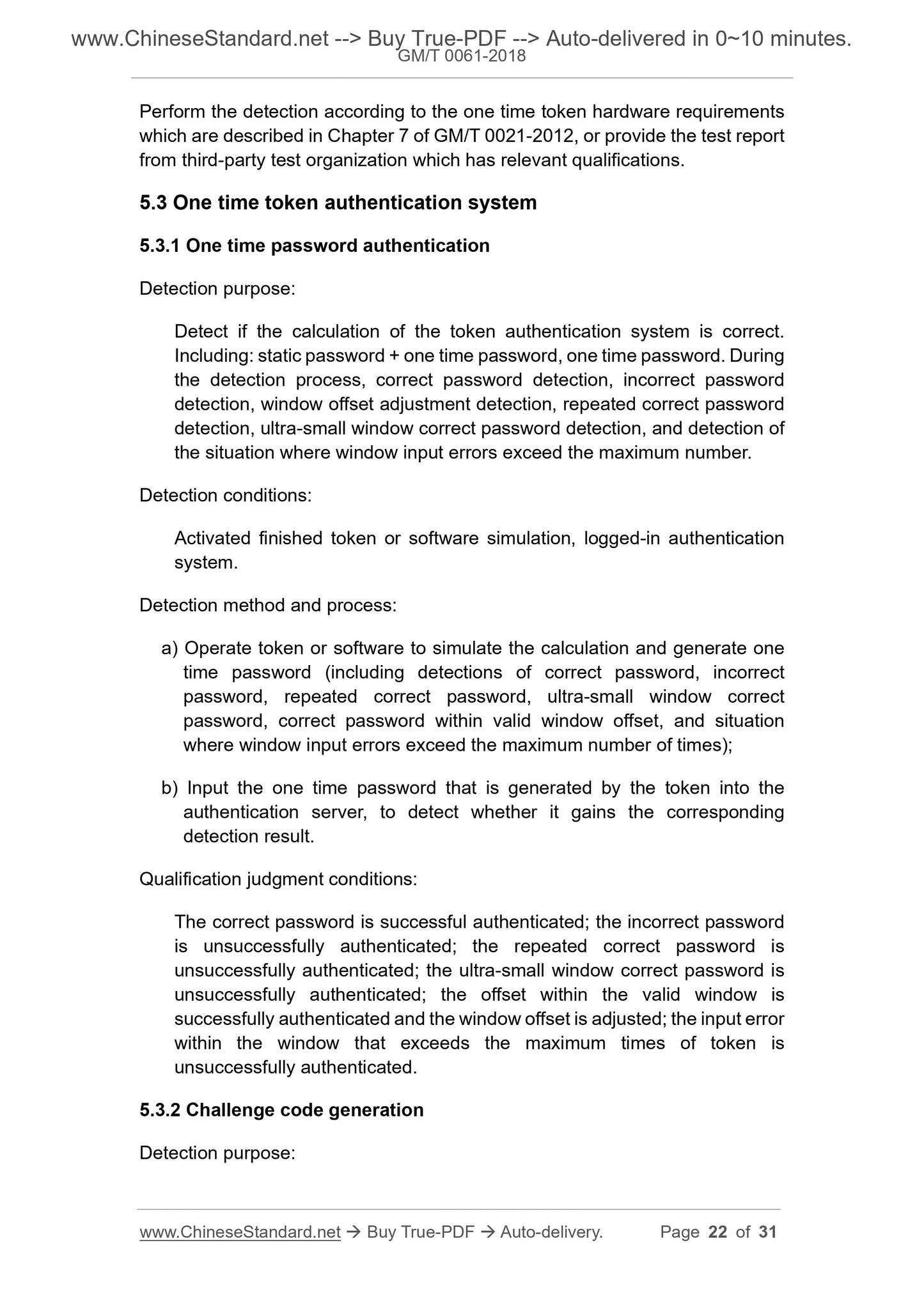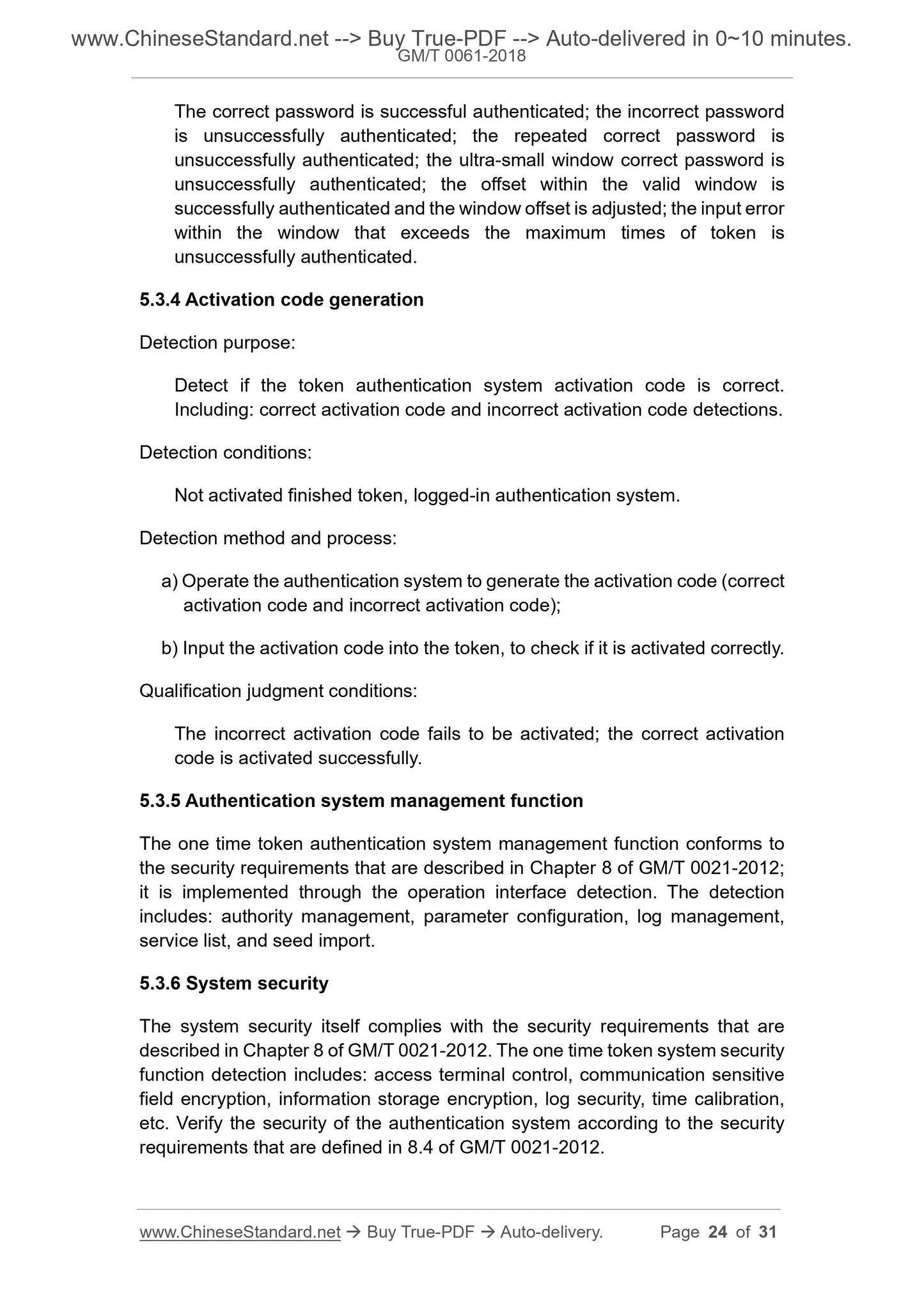1
/
of
11
www.ChineseStandard.us -- Field Test Asia Pte. Ltd.
GM/T 0061-2018 English PDF (GM/T0061-2018)
GM/T 0061-2018 English PDF (GM/T0061-2018)
Regular price
$230.00
Regular price
Sale price
$230.00
Unit price
/
per
Shipping calculated at checkout.
Couldn't load pickup availability
GM/T 0061-2018: Detect specifications of one time password application
Delivery: 9 seconds. Download (and Email) true-PDF + Invoice.Get Quotation: Click GM/T 0061-2018 (Self-service in 1-minute)
Newer / historical versions: GM/T 0061-2018
Preview True-PDF
Scope
This Standard specifies the relevant detection contents of password algorithm,one time token, authentication system and key management system of the one
time password system. This Standard applies to the detection of passwords
and security functions of one time password-related password products.
Basic Data
| Standard ID | GM/T 0061-2018 (GM/T0061-2018) |
| Description (Translated English) | Detect specifications of one time password application |
| Sector / Industry | Chinese Industry Standard (Recommended) |
| Classification of Chinese Standard | L80 |
| Word Count Estimation | 20,290 |
| Date of Issue | 2018-05-02 |
| Date of Implementation | 2018-05-02 |
| Issuing agency(ies) | State Administration of Cryptography |
Share
